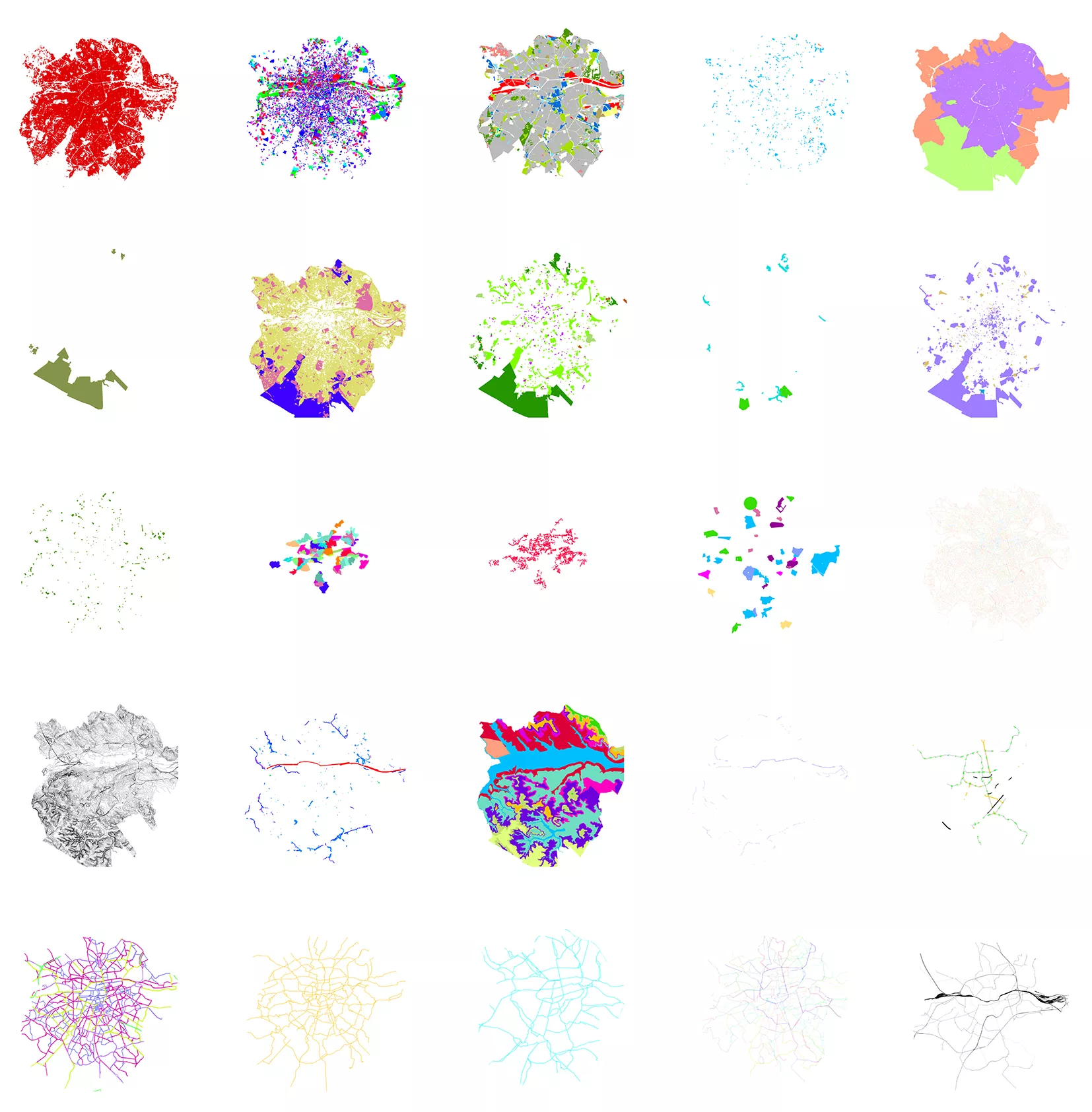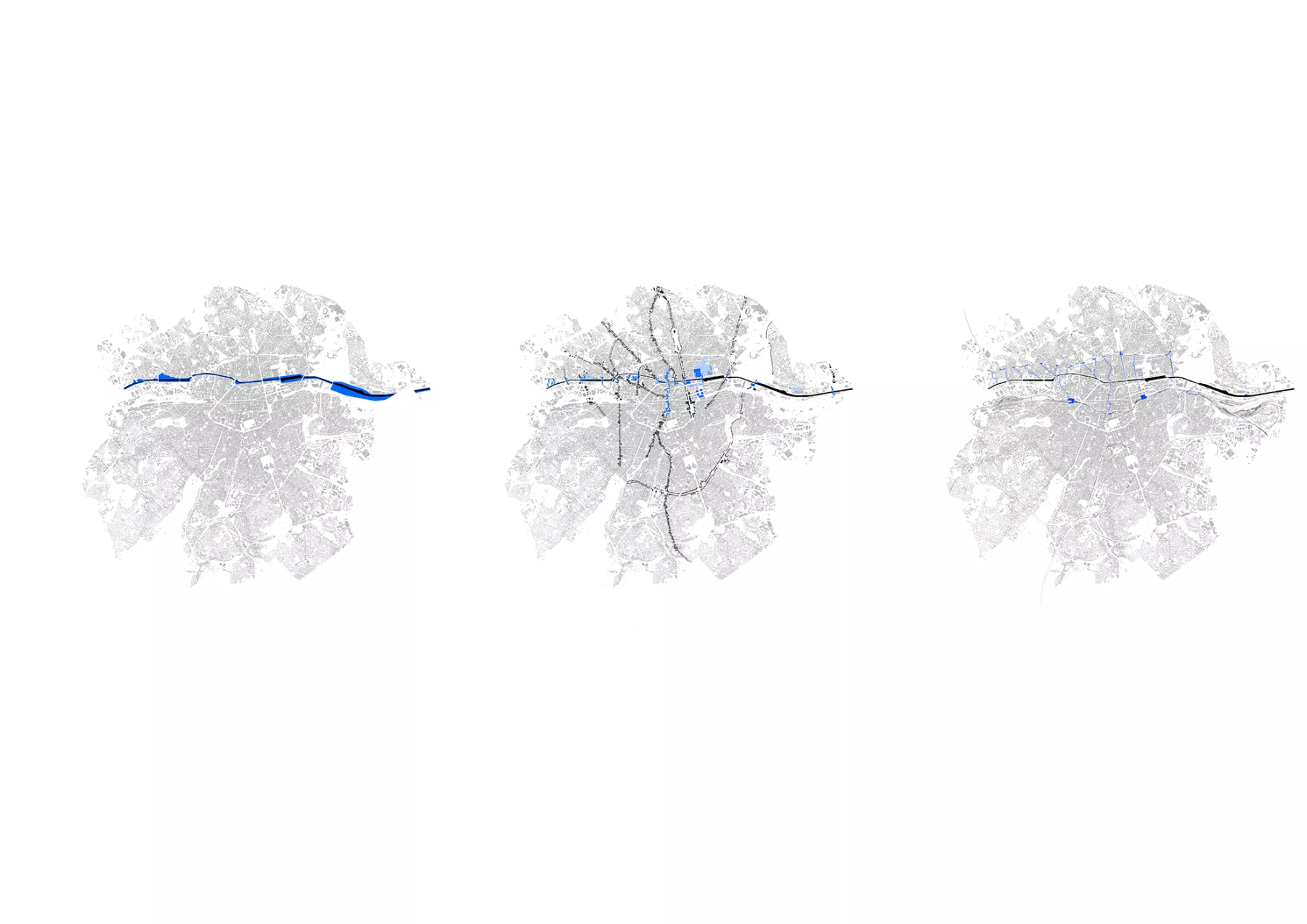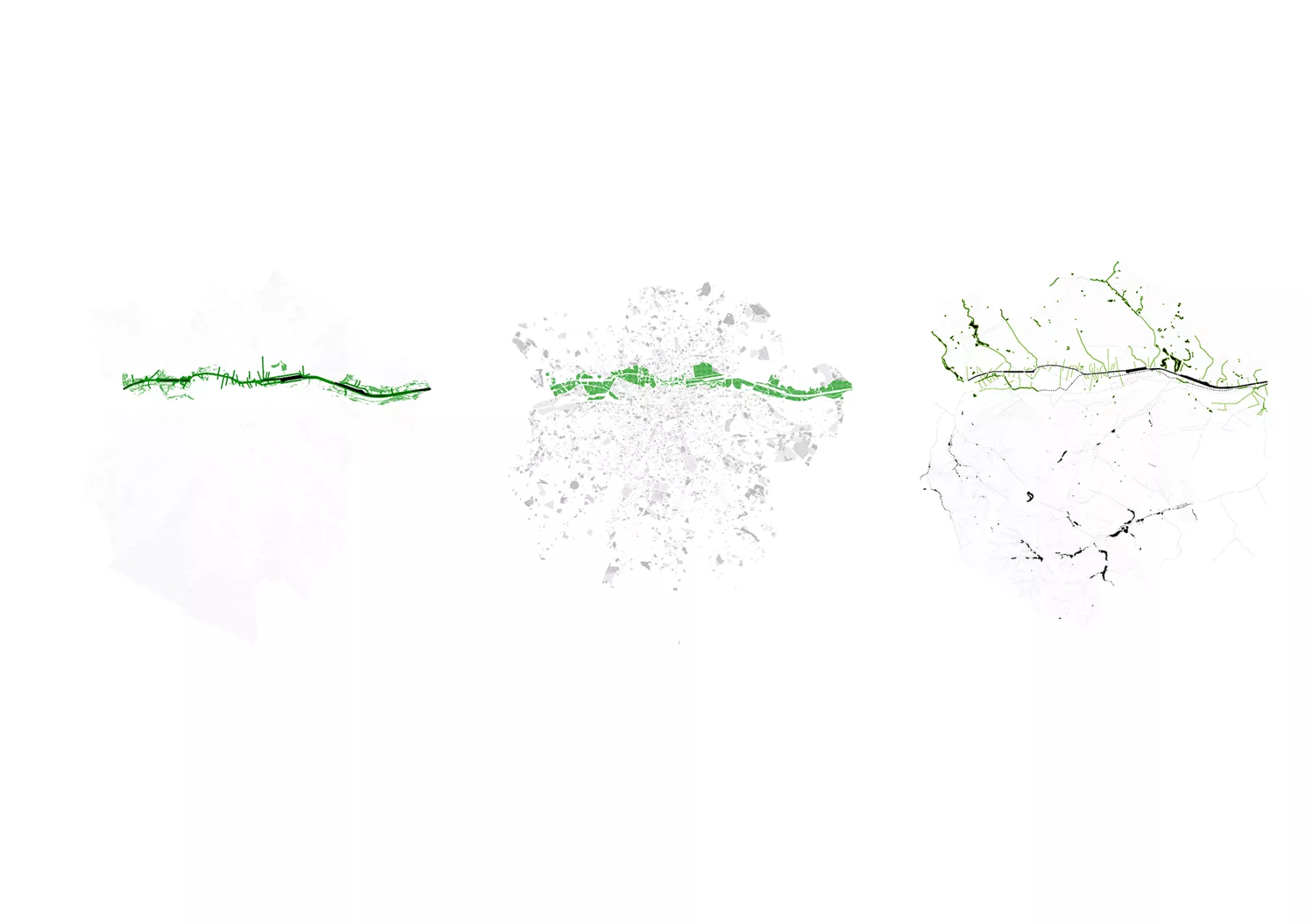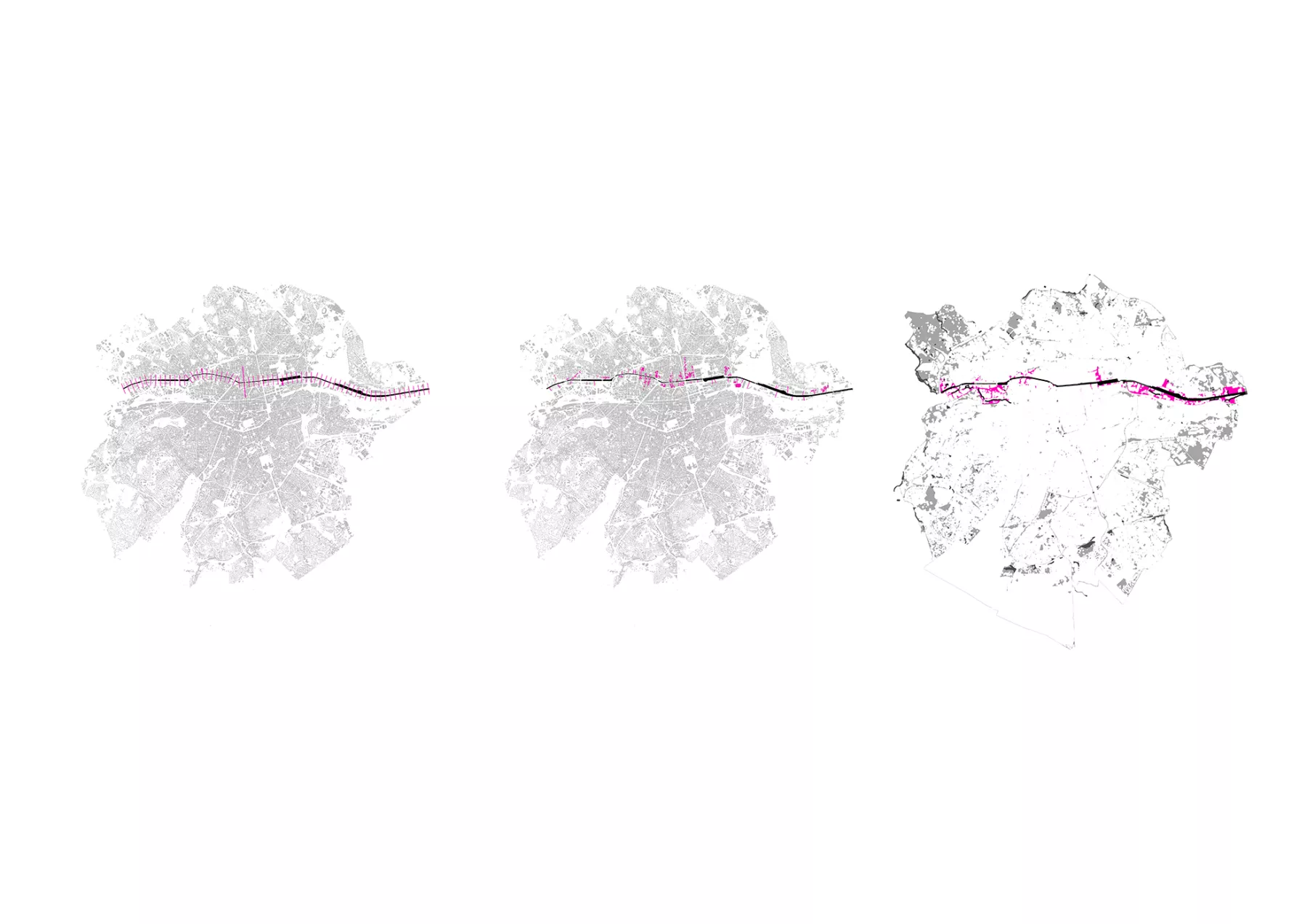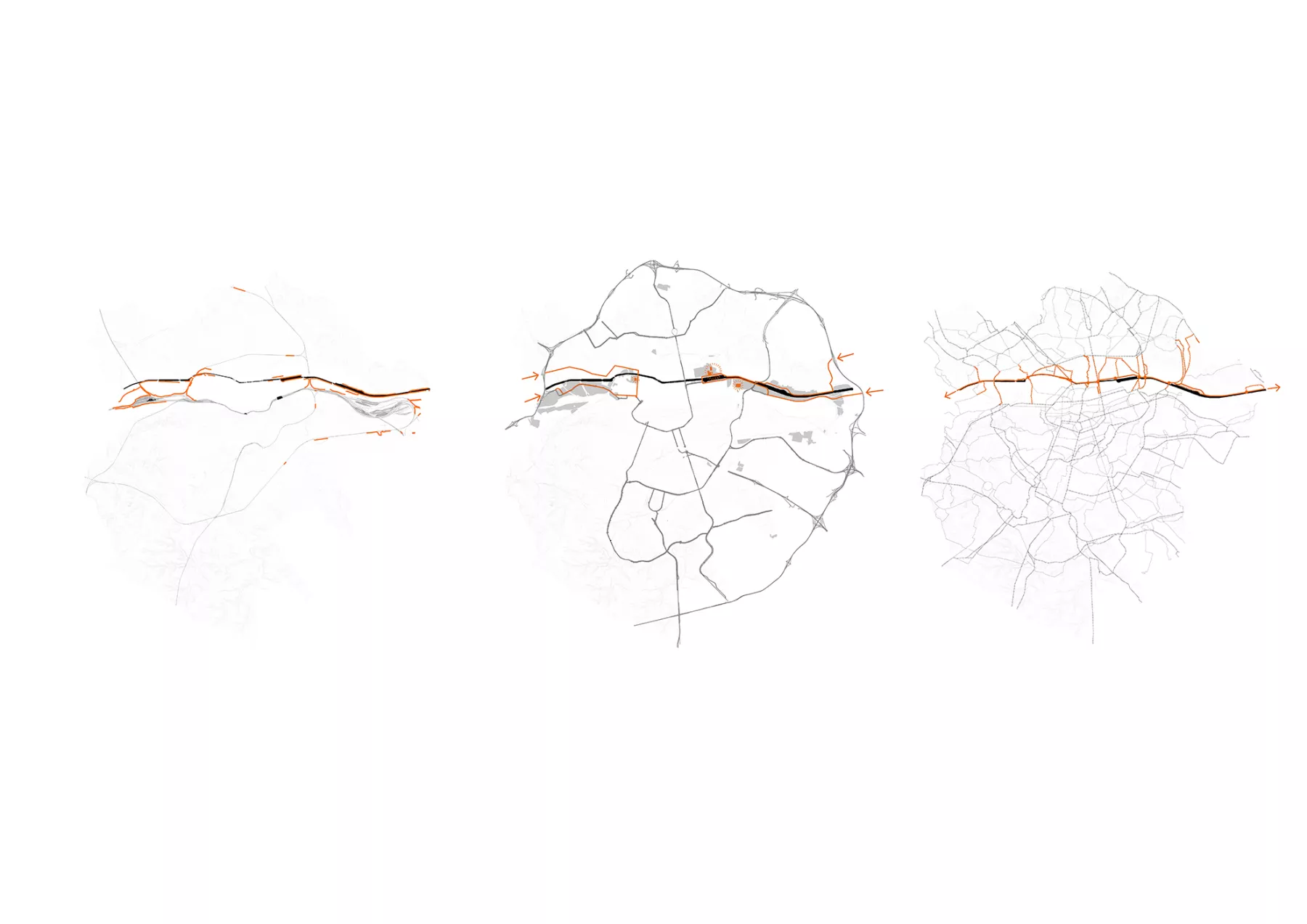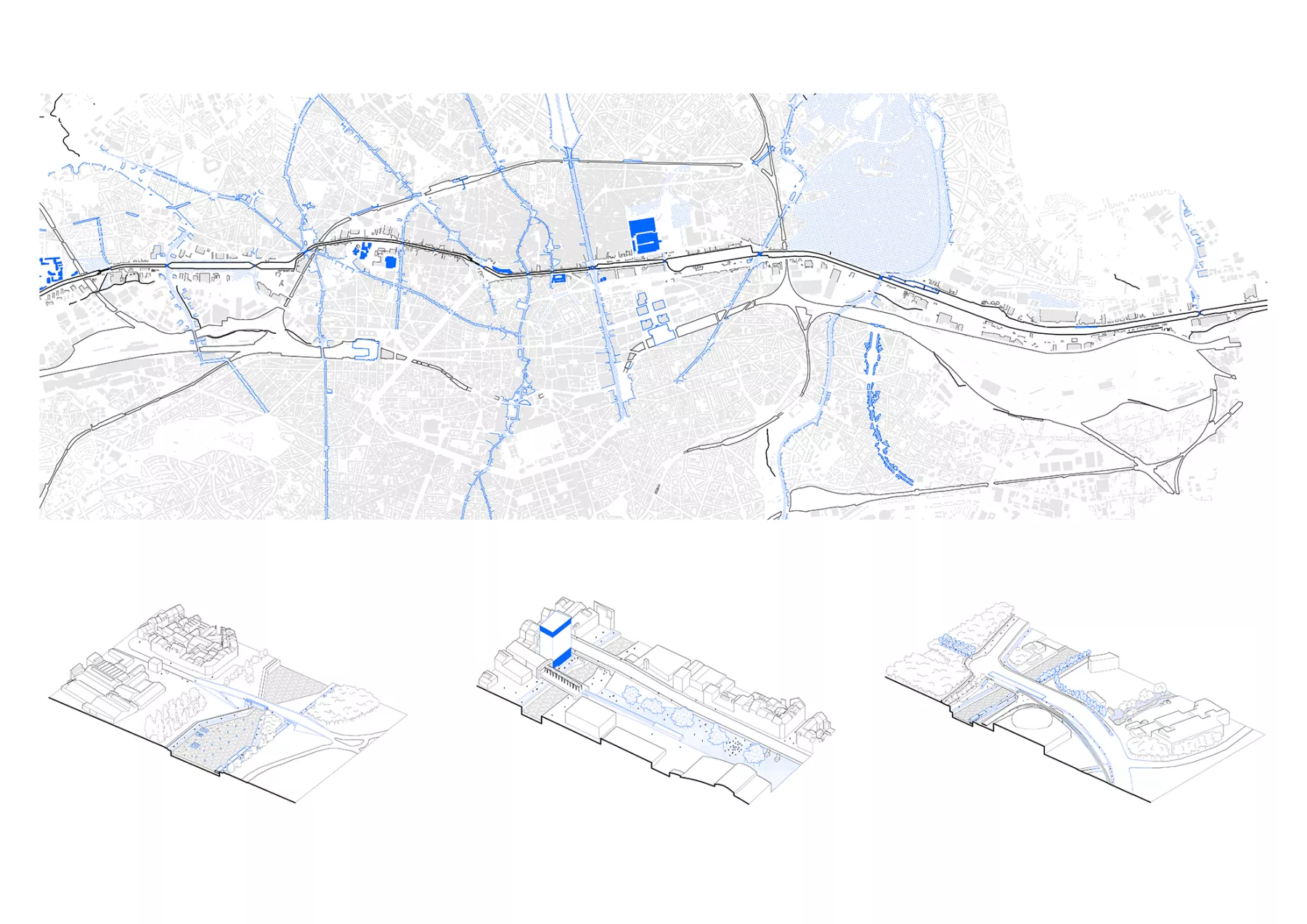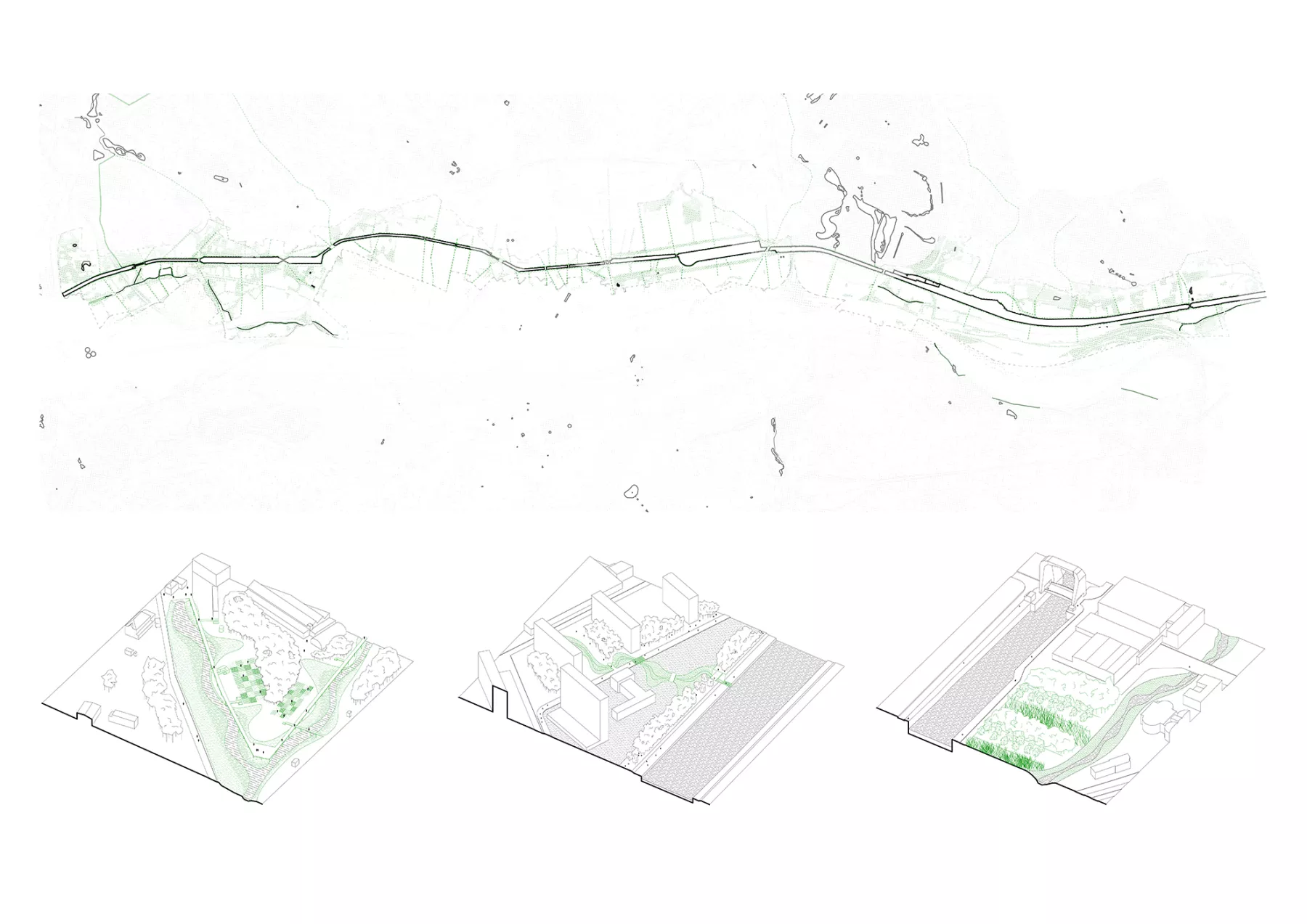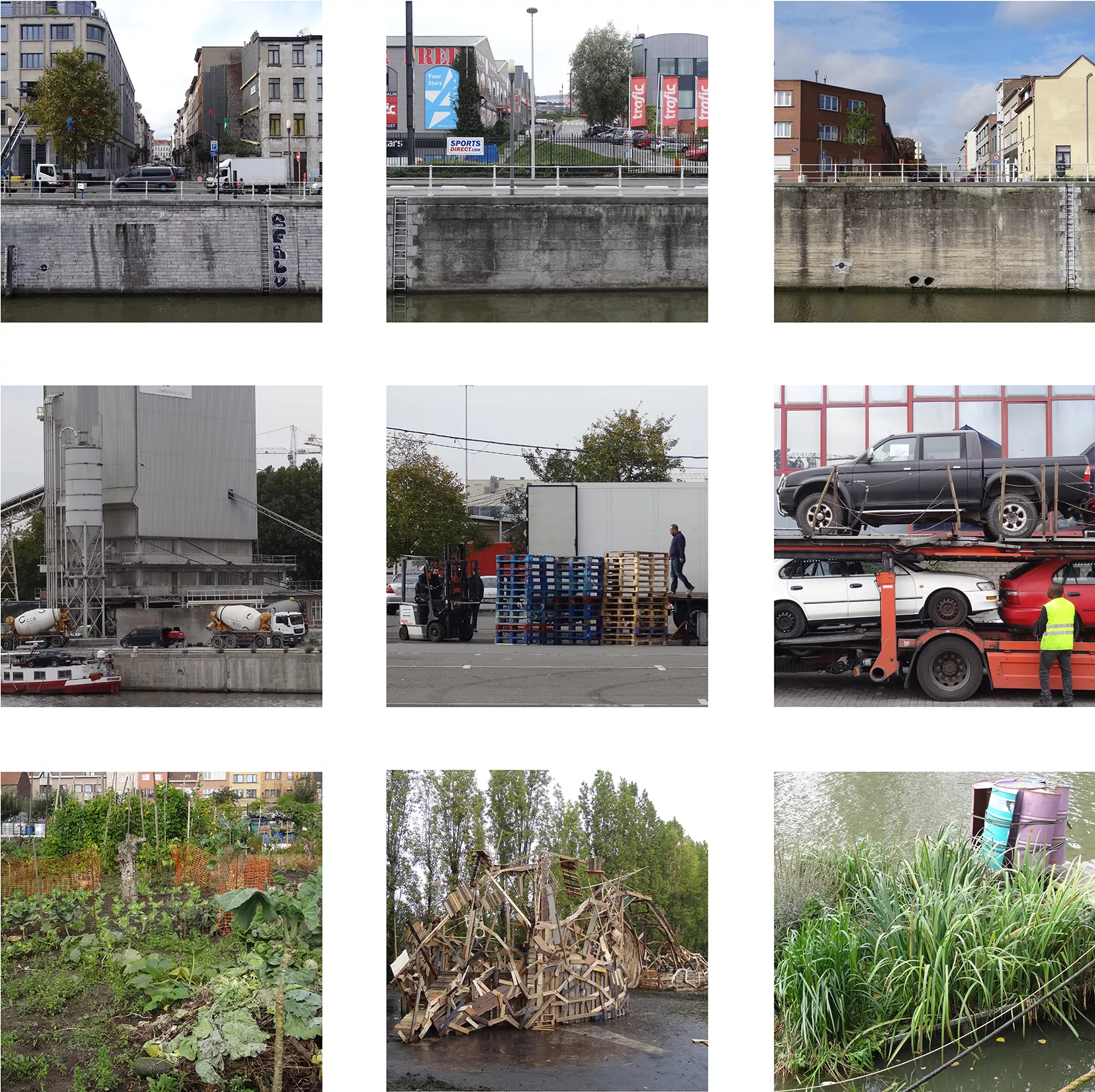- Location
1000 Brussels
Belgium
- Type
-
- Masterplan
- Year
- 2017
- Size : landscape + built
- 300 ha
- Type of procurment
- public
- Status
- competition
- Collaboration
PROAP, KIS, Sweco, Antea
BKP - canal public spaces study.
The canal area in Brussels is a marshland territory, characterized by its industrial infrastructure and unique juxtapositions of buildings and nature. It serves as a testing ground for new models in industry, housing, and ecology, with the goal of integrating these aspects into a dense urban context.
It is also a territory of experimentation. The social, ecological, and economic reasons for maintaining productive activity in the city lead to reinvesting in the industrial heritage. New models of short circuits, recycling, clusters, etc., are tested here, which only a dense and diversified urban context can offer. The land reserves allow for experimenting with new responses to housing problems generated by demographic pressure, social dualization, diversification of lifestyles, insufficiency of public policies, and the cost of private housing. On the ecological front, the integration of water management is an omnipresent challenge. Likewise, the multiple fragments of 'third landscape' have become a reservoir of biodiversity to protect. Lastly, the ambition to create a 'canal' requires redefining spaces and uses that will allow it to be inscribed as such in Brussels' culture and imagination. Numerous cultural and citizen institutions are tackling this task. From this point of view, the issue of public space is strategic. How can an industrial infrastructure become a public space open to the city, people, and nature?
The territory's transformation is centered around four dimensions:
- Infrastructural Landscape - The project investigates the challenges related to the canal, railway, and roads, considering their roles as productive infrastructures. It proposes intervention principles to diversify their uses and enhance their functionality, ultimately promoting better integration with the surrounding urban environment.
- Metropolitan Landscape - The study identifies the significance of major urban axes, bridges, and activity hubs, examining the challenges of unifying the entire city. It formulates intervention principles aimed at fostering connectivity and coherence, thereby enhancing the overall metropolitan experience.
- Everyday Landscape - Recognizing the importance of social life for residents, the project scrutinizes challenges associated with creating a rich and diversified living environment. By proposing intervention principles that prioritize public spaces and facilities, it seeks to cultivate a vibrant everyday landscape for the inhabitants.
- Natural Landscape - The study acknowledges the need for ecosystem restoration and decontamination, addressing the challenges of designing a new network of public spaces that coexist harmoniously with nature. The intervention principles target the creation of sustainable, resilient, and environmentally friendly landscapes, essential for a thriving canal area.
The study employs also four complementary scales: regional, Canal zone, segments, and constructive. At each scale, the project identifies challenges, intervention principles, and landscape structures, ultimately leading to the implementation of detailed profiles. Through this comprehensive approach, the project envisions a vibrant, connected, and sustainable canal area for Brussels.
